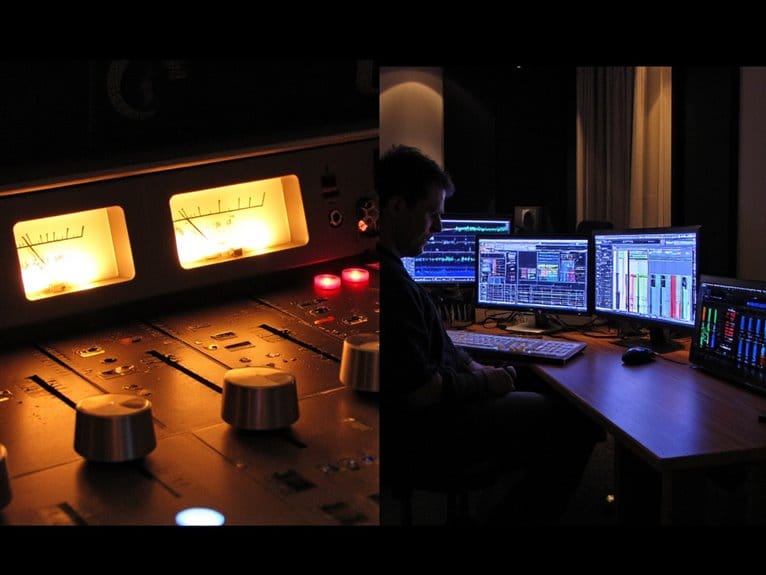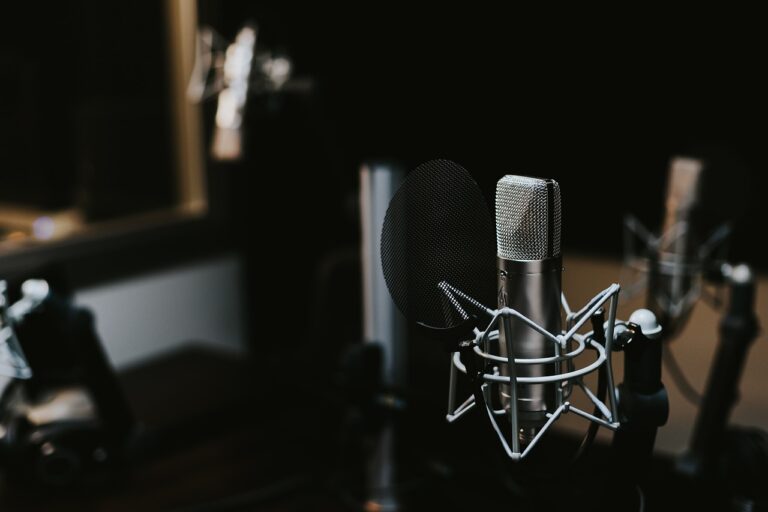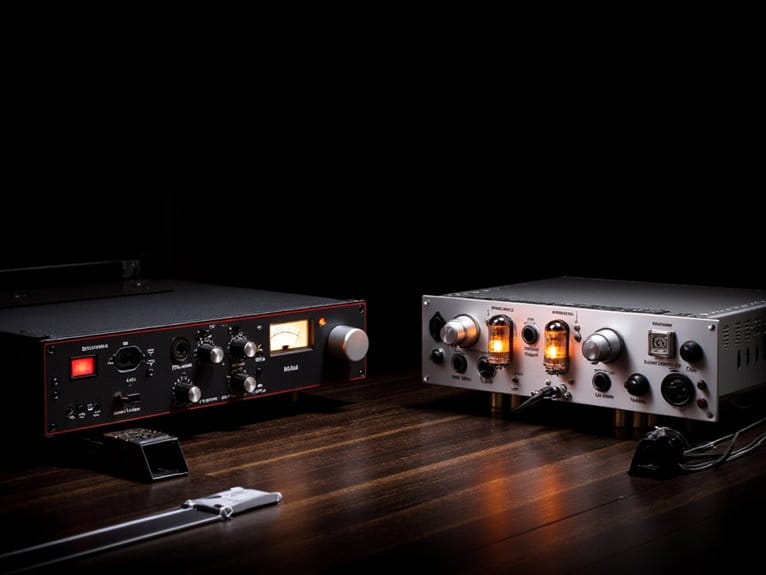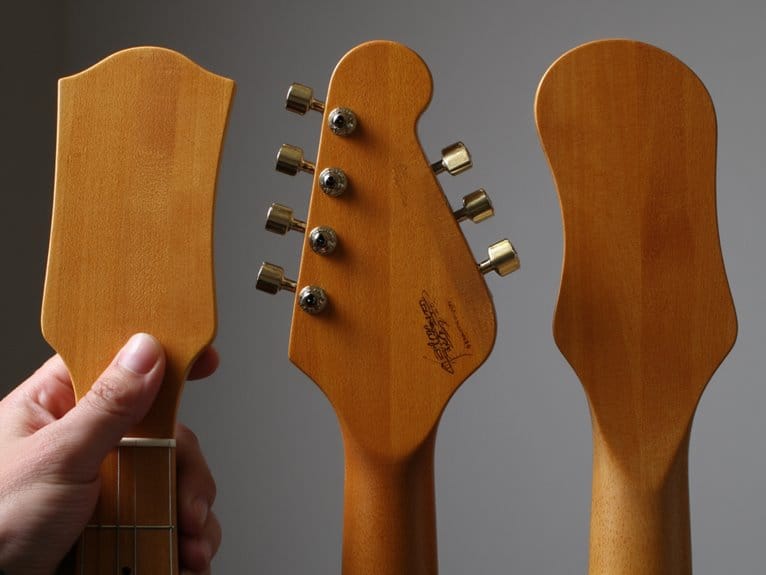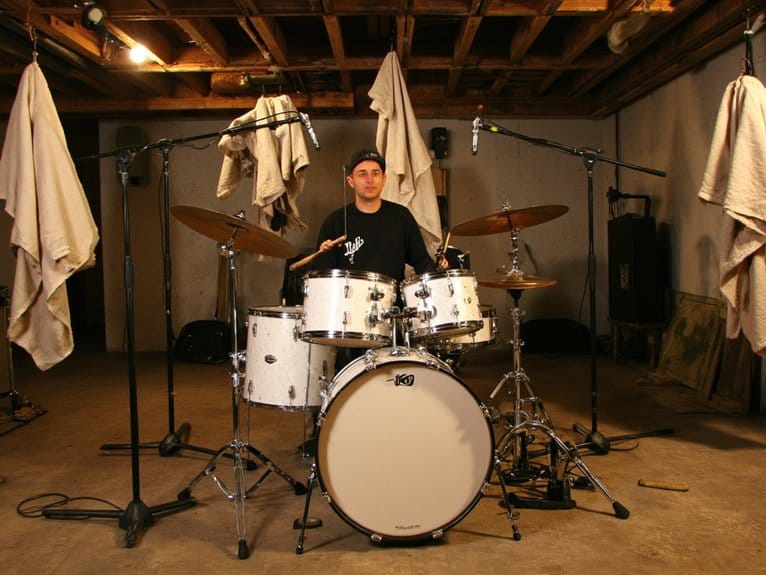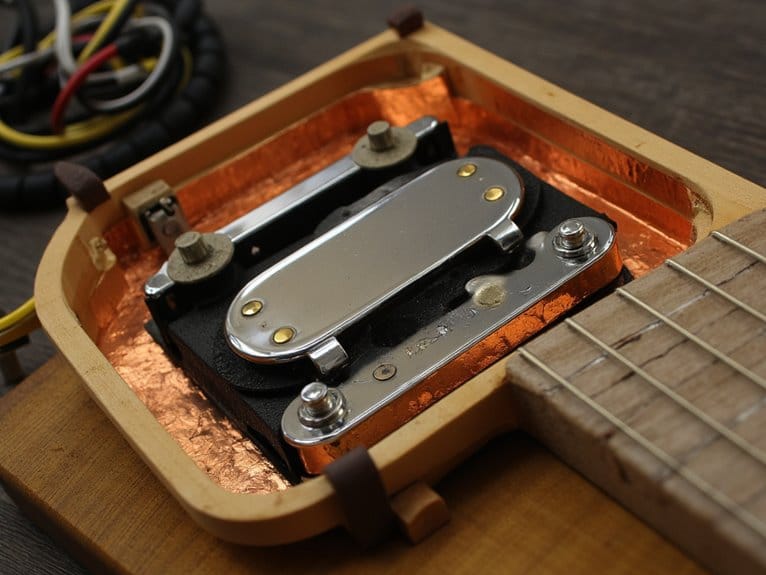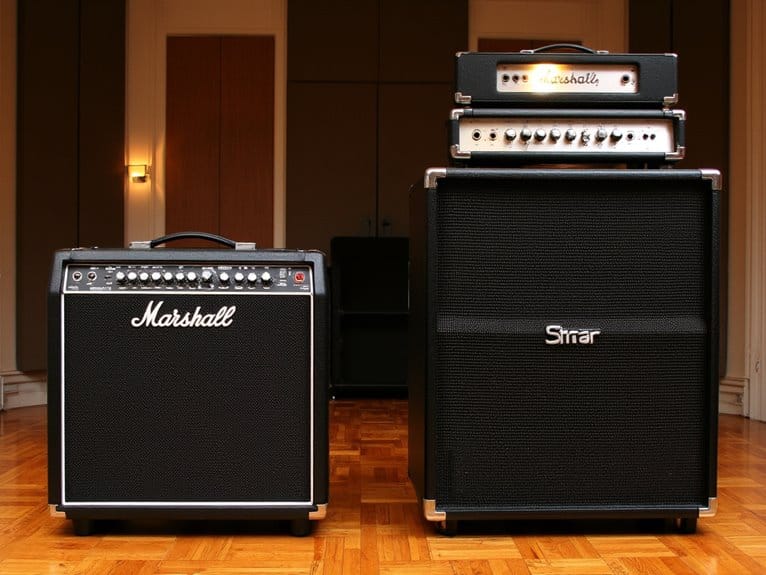Summing ITB Vs Summing OTB: Digital Vs Analog Mixing
Digital ITB summing delivers mathematical precision and instant recall through your DAW’s software algorithms, while analog OTB summing routes tracks through physical hardware that imparts harmonic distortion, enhanced stereo width, and natural warmth. You’ll find ITB mixing offers unlimited tracks, faster workflows, and lower costs, whereas OTB provides richer character through first, second, and third-order harmonics at higher financial investment. The choice between transparent efficiency and colored musicality defines your sonic signature, and understanding each method’s technical complexities will guide your studio decisions.
We are supported by our audience. When you purchase through links on our site, we may earn an affiliate commission, at no extra cost for you. Learn more.
Notable Insights
- Digital summing provides mathematical precision and transparency, while analog summing adds harmonic distortion and natural warmth to mixes.
- Analog summing enhances stereo width and dynamic range, creating more immersive soundstages with better instrument separation than digital.
- ITB mixing offers instant recall and unlimited tracks, whereas OTB requires manual documentation and physical re-patching for revisions.
- Digital workflows are more cost-effective with minimal upfront investment, while analog systems require thousands in hardware and maintenance costs.
- ITB solutions provide easier scalability and faster project turnaround, making them dominant for budget-conscious and efficiency-focused professionals.
Understanding Digital and Analog Summing Methods
When you’re working on a mix, the summing process represents the essential final step where all your individual tracks get combined into that stereo masterpiece you’ve been crafting.
Honestly, this is where the digital versus analog debate gets really interesting. Digital summing happens inside your DAW, where software algorithms combine tracks with mathematical precision, maintaining complete transparency without adding any coloration to your sound character.
Digital summing delivers mathematical precision and complete transparency, while analog summing adds the warmth and character that many engineers crave.
Analog summing, on the other hand, routes your tracks through physical hardware like consoles or dedicated summing mixers, where resistors, capacitors, and circuit topologies impart subtle harmonic distortion and warmth. This process enhances stereo width, making your mix more vivid and expressive compared to purely digital summing.
These different mixing techniques fundamentally shape how your final mix sounds, with digital offering clinical accuracy while analog adds that coveted “musical” quality. Outboard summing boxes like the 2-Bus allow you to maintain all your digital production advantages including recall ability, plug-ins, and automation while gaining the sonic benefits of analog processing.
Benefits of In-the-Box Digital Mixing
While I’ve spent countless hours debating the merits of analog warmth with fellow engineers, I’ll admit that in-the-box digital mixing has fundamentally transformed how we approach music production, offering benefits that extend far beyond simple convenience.
| Aspect | ITB Advantage | Impact |
|---|---|---|
| Workflow | Instant recall sessions | Eliminates manual gear reset |
| Cost | No hardware investment | Reduces studio overhead |
| Precision | Sample-accurate control | Perfect automation consistency |
| Creativity | Unlimited experimentation | Risk-free mixing techniques |
The plugin versatility you’ll experience with modern DAWs enables mixing techniques that would require thousands of dollars in analog equipment. You can experiment with unconventional processing chains, automate every parameter with surgical precision, and recall your exact settings months later-something that’s impossible with hardware consoles, though I occasionally miss the tactile satisfaction of turning actual knobs. Modern software can even emulate hardware, expanding your creative possibilities without the physical limitations and expense of actual vintage gear. Digital control surfaces like the Avid S4 bridge this gap by providing instant recall while maintaining the hands-on feel of working with a traditional console. The bundled software that comes with many modern audio interfaces further enhances the in-the-box experience, providing immediate usability for producers who want to start recording and mixing without additional software purchases. When paired with affordable audio interfaces, even bedroom producers and podcasters can achieve professional-grade sound quality that rivals expensive studio setups.
Advantages of Out-the-Box Analog Summing
The renaissance of analog summing in modern studios represents more than nostalgia-it’s a calculated response to the sonic limitations that digital summing can impose on complex mixes.
When you route your stems through dedicated analog summing hardware, you’ll immediately notice the enhanced harmonic richness that transforms sterile digital signals into warm, musically engaging content.
Analog summing hardware breathes life into digital stems, adding the harmonic warmth and musical character that pure digital processing lacks.
The circuitry naturally generates first, second, and third-order harmonics while expanding your dynamic range beyond what’s achievable in-the-box.
Your mixes maintain their spatial characteristics and instrument separation, even with 100+ tracks, preventing that dreaded flat, congested sound.
The increased headroom accommodates transients without clipping, while the wider stereo image creates an immersive soundstage that digital summing simply can’t replicate.
This approach delivers cost-effective professional-grade sound quality without requiring the massive financial investment typically associated with high-end analog gear.
Unlike digital summing which relies on mathematical calculations, analog summing employs physical circuits with resistors, transformers, and amplifiers that maintain higher resolution while avoiding computational rounding errors.
Workflow Efficiency and Session Recall Differences
Beyond the sonic considerations that drive many engineers toward analog summing, you’ll quickly discover that workflow efficiency becomes the deciding factor in most professional environments.
Digital summing delivers unmatched session speed through instant recall capabilities, while analog setups require manual documentation and physical adjustments that slow down project turnaround times.
The routing flexibility differences become apparent when you’re managing complex sessions:
- Digital environments allow unlimited track counts with automated processes and instant reconfiguration
- Analog summing requires physical re-patching and hardware adjustments for each session change
- Digital sessions transfer seamlessly between studios via project files, while analog depends on identical hardware setups
I’ve found that while analog’s tactile control satisfies creative impulses, the time investment rarely justifies itself in deadline-driven scenarios where clients expect rapid revisions and collaborative workflows. Digital audio’s resistance to degradation over time ensures consistent playback quality across multiple sessions without the deterioration concerns that affect analog recordings. The cost implications between these approaches also affect project budgets, with analog requiring significant upfront hardware investments compared to software-based digital solutions.
Cost Analysis and Practical Implementation Considerations
When studio engineers weigh analog versus digital mixing decisions, the financial reality often trumps sonic preferences, and I’ve watched countless talented mixers reluctantly abandon their analog dreams after crunching the numbers.
Your initial investment for OTB summing easily reaches thousands, requiring physical mixers, multi-channel converters, and extensive cabling, while ITB setups leverage your existing computer with affordable plugin purchases.
Operational expenses compound quickly with analog gear demanding electricity, maintenance, calibration, and professional servicing that I’ve seen drain budgets faster than expected. The market has seen notable character boxes increase significantly in price, with some vintage processors now commanding premium costs that can strain studio budgets.
Technical complexity multiplies when you’re managing physical routing, gain staging, and synchronization issues that simply don’t exist in digital workflows. The transition to digital workflows can lead to increased operational efficiency, enabling quicker project turnaround and streamlined processes that maximize studio profitability.
Scalability limitations become painfully apparent when expanding OTB systems requires purchasing additional hardware rather than simply adding software instances.
On a final note
You’ll ultimately choose based on your priorities, budget, and workflow preferences. If you’re starting out or need consistent recall, ITB mixing offers incredible value and flexibility. If you’ve got the budget and crave that analog character, OTB summing can add subtle magic to your mixes. I’ve found both approaches produce professional results-it’s more about your skills than your summing method. Don’t overthink it; focus on making great music.

